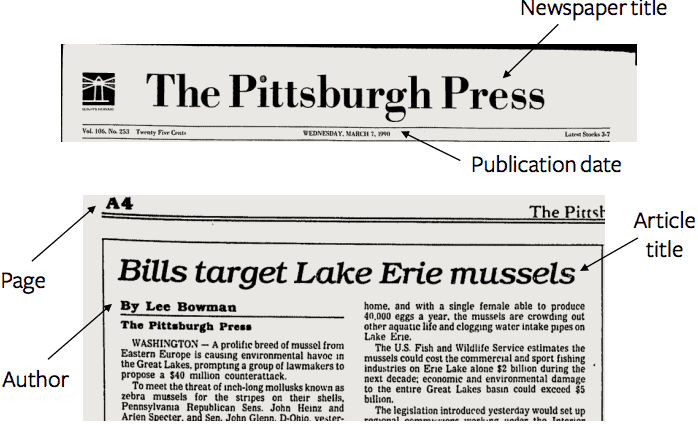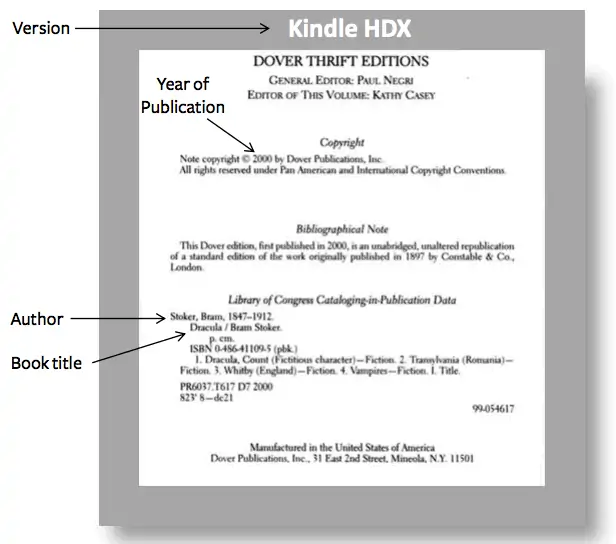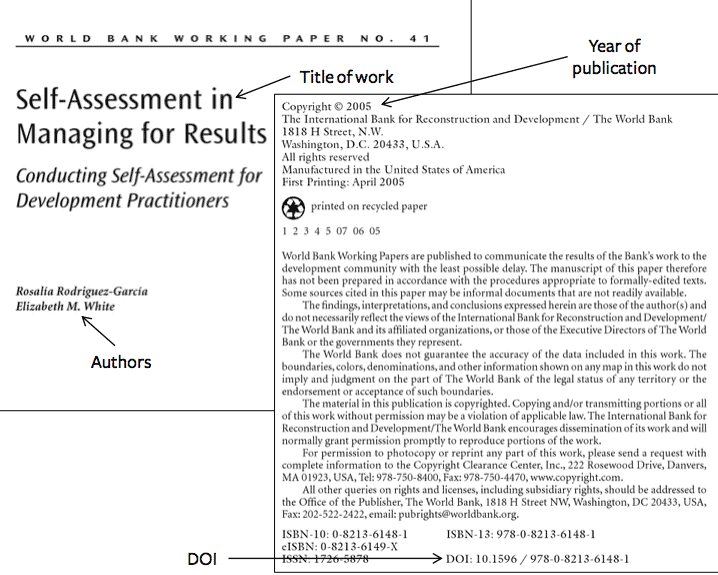How to Cite a Book in APA
Published April 9, 2012. Updated July 13, 2022.
Book – A written work or composition that has been published – typically printed on pages bound together.
Understanding how to cite books will provide you with the basis for citation conventions in APA style. Books are key components of many papers and are often an invaluable resource, so this guide will show you how to format reference page citations and in-text citations for APA 7th edition.
Citing a book in which the chapters are written by different authors is a little more involved than citing other types of books. You will find information on this type of book in this guide, but you can find also find more in-depth information here, in the article How to Cite a Chapter in a Book APA. That article is also helpful for in-text citations that include page numbers.
Guide Overview
- What you need
- Citing a book (print)
- Citing an E-book (online or digital book)
- Citing a book (found in a database)
- Citing an audiobook
- Citing a book with an editor credited on the cover
- Citing an edited book
- Troubleshooting
What you need
In APA, a basic book citation includes the following information:
- Author’s name
- Title of the book
- Publisher of the book
- Year published
Additional information is needed when citing:
- Books on websites or books in databases
- DOI or stable URL if available
- E-books
- DOI or stable URL if available
- Translated or edited books
- Name of the translator or editor
- Title of the translator or editor (trans. or ed. respectively)
- Chapters
- Name of the chapter author
- Name of the chapter
- Name of the book editor or author
- Page numbers or ranges used
- Books with multiple editions or volumes
- Volume numbers and/or edition numbers
- Republished book
- New edition number
- Name of forward or introduction author if applicable
- Original publication date
Citing a book in APA (print)
| Reference Page | |
|---|---|
| Structure |
Author, F. M. (Year of Publication). Title of work. Publisher. |
| Example |
James, Henry. (2009). The ambassadors. Serenity Publishers. |
| In-text citation | |
|---|---|
| Parenthetical structure
Narrative structure |
(Author Last Name, Publication Year) Author Last Name (Publication Year) |
| Parenthetical citation example
Narrative citation example |
(Henry, 2009) Henry (2009) |
Note: Capitalize the first letter of the first word of the title and any subtitles (the first word that follows a colon), as well as the first letter of any proper nouns. See our APA Citation Basics guide or the APA Publication Manual for more information.
Citing an E-book in APA (online or digital book)
An e-book is considered a written work or composition that has been digitized and is readable through computers or e-readers (Kindles, iPads,nooks etc.). As of the APA 7th edition, a special notation does not need to be made for e-reader versions. Simply include the book’s URL or DOI number at the end of the citation. However, if you’re citing an audiobook, scroll down this page to see the different citation structure for audiobooks.
| Reference Page | |
|---|---|
| Structure |
Author, F. M. (Year of Publication). Title of work. Publisher. URL or DOI |
| Example |
Stoker, B. (2000). Dracula. Dover Publications. https://www.overdrive.com/ |
| In-text citation | |
|---|---|
| Parenthetical structure
Narrative structure |
(Author Last Name, Publication Year) Author Last Name (Publication Year) |
| Parenthetical citation example
Narrative citation example |
(Stoker, 2000) Stoker (2000) |
Citing a book in APA (found in a database)
Some e-books may be available online through your library’s databases or catalogs. According to the 7th edition of APA style, most books found via academic databases do not need to include the database name or link in the citation. This is because these books are usually widely available in many place and resources.
| Reference Page | |
|---|---|
| Structure |
Author, F. M. (Year of Publication). Title of work. Publisher. DOI if available |
| Example |
Rodriguez-Garcia, R., & White, E.M. (2005). Self-assessment in managing for results: Conducting self-assessment for development practitioners. The International Bank for Reconstruction and Development / The World Bank. doi:10.1596/9780-82136148-1 |
| In-text citation | |
|---|---|
| Parenthetical structure
Narrative structure |
(Author Last Names, Publication Year) Author Last Name (Publication Year) |
| Parenthetical citation example
Narrative citation example |
(Rodriguez-Garcia & White, 2005) Rodriguez-Garcia and White (2005) |
Citing an audio book in APA
An audiobook is a book that has been converted into audio files or an audio format. They are also sometimes called “books on tape.”
| Reference Page | |
|---|---|
| Structure |
Author, F. M. (Year of Publication). Title of work (F. M. Narrator, Narr.) [Audiobook]. Publisher. URL or DOI if available |
| Example |
Gaiman, N. (2005). Anansi Boys (L. Henry, Narr.) [Audiobook]. HarperAudio. |
| In-text citation | |
|---|---|
| Parenthetical structure
Narrative structure |
(Author Last Name, Publication Year) Author Last Name (Publication Year) |
| Parenthetical citation example
Narrative citation example |
(Gaiman, 2005) Gaiman (2005) |
Citing a book with an author and an editor
| Reference Page | |
|---|---|
| Structure |
Author Surname, F. M. (Year of Publication). Title of work. (First name initial and last name of editor, Ed). Publisher. URL or DOI |
| Example |
Stevens, E. (2011). Horror stories to chill. (P. Alvarez, Ed). Mountain Publications. |
| In-text citation | |
|---|---|
| Parenthetical structure
Narrative structure |
(Author Surname, Year Published) Author Last Name (Publication Year) |
| Parenthetical citation example
Narrative citation example |
(Stevens, 2011) Stevens (2011) |
Citing an edited book (no single author credited)
| Reference Page | |
|---|---|
| Structure |
Editor Surname, F. M. (Ed.). (Year of Publication). Title of work. Publisher. URL or DOI if it exists |
| Example |
Mitchem, J., & Smithwick, L. (2019). Gone dogs: tales of dogs we’ve loved. Thomas Woodland LLC. |
| In-text citation | |
|---|---|
| Parenthetical structure
Narrative structure |
(Editor Surname, Year Published) Editor Surname (Year Published) |
| Parenthetical example
Narrative example |
(Mitchem & Smithwick, 2019) Mitchem and Smithwick (2019) |
Here is a video that reviews book citations in APA style:
Troubleshooting
Solution #1: How to cite a book in another language
Books written in another language should contain the translation in brackets next to the title. If the language contains characters that are different from the Roman alphabet, transliterate the alphabet into the Roman alphabet for your citation.
Structure:
Author’s last name, F. M. (Year). Title of the book in original language [Translated title]. Publisher.
Example:
Sanchez, E. (2018). Yo no soy tu perfecta hija Mexicana [I am not your perfect Mexican daughter]. Vintage Espanol.
Solution #2: How to cite a republished translated book
For translated books, include the name of the original author at the start of the citation, but for the year, include the date of publication for the version you are using. After the title, include the translator’s name, and after the publisher, provide the original publication date. For in-text citation, two dates are required. Write the date of the original publication first, then add a slash followed by the current version that you are using.
Reference page structure:
Author’s last name, F. M. (Year). Title of the work (Translator’s F. Last name, Trans.; Edition number ed.). Publisher. (Original work published Year)
Reference page example:
Freud, S. (1950). Beyond the pleasure principle (J. Strachey, Trans., 2nd ed.). Liveright. (Original work published 1920)
In-text citation structure:
Parenthetical structure: (Author last name, date of original publication/date of current version)
Narrative structure: Author last name (date of original publication/date of current version)
In-text citation example:
Parenthetical example: (Freud, 1920/1950)
Narrative example: Freud (1920/1950)
Solution #3: How to cite an ancient Greek or Roman work
Much like translated versions, include the original date of publication after the publisher (or DOI link). However, for ancient texts, be sure to include “ca.” (which stands for “circa”) with the date, followed by B.C.E. or C.E. For the in-text citation, you will also need to include ca. and B.C.E. or C.E. after the author’s name, followed by the date of the current version.
Reference page structure:
Author’s last name, F. M. (Year). Title of the work (Translator’s F. Last name, Trans.; Edition number ed.). Publisher. (Original work published ca. date)
Reference page example:
Homer. (1990). The odyssey (R. Fitzgerald, Trans.). Vintage Books. (Original work published ca. 8 B.C.E.)
In-text citation structure:
Parenthetical structure: Author last name, original date of the work/current version date
Narrative structure: Author last name (original date of the work/current version date)
In-text citation example:
Parenthetical example: (Homer, ca. 8 B.C.E./1990)
Narrative example: Homer (ca. 8 B.C.E./1990)
- How do I cite a book in APA Style?
-
To cite a book in APA style, you need to have basic information including the authors, publication year, book title, and publisher. The templates for in-text citation and reference list entry of a book written by a single author along with examples are given below:
In-text citation template and example:
Narrative
Author Surname (Publication Year)
Dean (2010)
Parenthetical
(Author Surname, Publication Year)
(Dean, 2010)
Reference list entry template and example:
Author Surname, F. M. (Publication Year). Book title: Subtitle of the book. Publisher Name.
Dean, J. (2010). Blog theory: Feedback and capture in the circuits of drive. Polity Press.
Set the book title in italics and sentence case. Capitalize the first word after a colon. If an edition number is given, place it after the title in parenthesis. The style should be, for example, (2nd ed.).
- How do I cite a book chapter in APA style when the book includes multiple authors?
-
To cite a book chapter with multiple authors in APA style, you need to have basic information including the names of the authors, publication year, chapter title, editors, publisher, and place of publication. The templates for in-text citation and reference list entry of a book chapter along with examples are given below:
When the source has 3–20 authors
In-text citation template and example:
In the text, use the first author’s surname followed by “et al.”
Narrative
First Author Surname et al. (Publication Year)
Rong et al. (2017)
Parenthetical
(Author Surname et al., Publication Year)
(Rong et al., 2017)
Reference list entry template and example:
List the names of all authors in the reference list. Use “&” before the last author’s name. The book title is set in italics. The word “In” is used before the editor’s name. Note that the style for setting the editors’ names is the initial of the first name (and if applicable, the middle name) followed by the surname. Use “(Eds.)” after the editors’ name. Do not include the publisher’s location in the reference. The example below is for three author names.
Author Surname, F. M., Author Surname, F.M., & Author Surname, F.M. (Publication Year). Chapter title: Subtitle. In F. Editor1 & F. Editor2 (Eds.), Book title (pp. #–#). Publisher Name.
Rong, X. L., Hilburn, J., & Sun, W. (2017). Immigration, demographic changes, and schools in North Carolina from 1990 to 2015. In X. Rong & J. Hilburn (Eds.), Immigration and education in North Carolina (pp. 1–24). Sense.
When the source has more than 20 authors
In-text citation template and example:
In the text, use the first author’s surname followed by et al.
Narrative
First Author Surname et al. (Publication Year)
Alvarez et al. (2019)
Parenthetical
(Author Surname, Publication Year)
(Alvarez et al., 2019)
Reference list entry template and example:
List the first 19 author’s names in the reference list followed by an ellipsis. Then add the last author’s name.
Author Surname, F. M., Author Surname, F. M., Author Surname, F. M., Author Surname, F. M., Author Surname, F. M., Author Surname, F. M., Author Surname, F. M., Author Surname, F. M., Author Surname, F. M., Author Surname, F. M., Author Surname, F. M., Author Surname, F. M., Author Surname, F. M., Author Surname, F. M., Author Surname, F. M., Author Surname, F. M., Author Surname, F. M., Author Surname, F. M., . . . Author Surname, F. M. (Publication Year). Chapter title: Subtitle. In F. Editor1 & F. Editor2 (Eds.), Book title (pp. #–#). Publisher Name.
Alvarez, L. D., Peach, J. L., Rodriguez, J. F., Donald, L., Thomas, M., Aruck, A., Samy, K., Anthony, K., Ajey, M., Rodriguez, K. L., Katherine, K., Vincent, A., Pater, F., Somu, P., Pander, L., Berd, R., Fox, L., Anders, A., Kamala, W., . . . Nicole Jones, K. (2019). Unsung psychology pioneers: A content analysis of who makes history (and who doesn’t). In R. Lerner & W. Overton (Eds.), The handbook of life-span development (pp. 509–553). Wiley.


